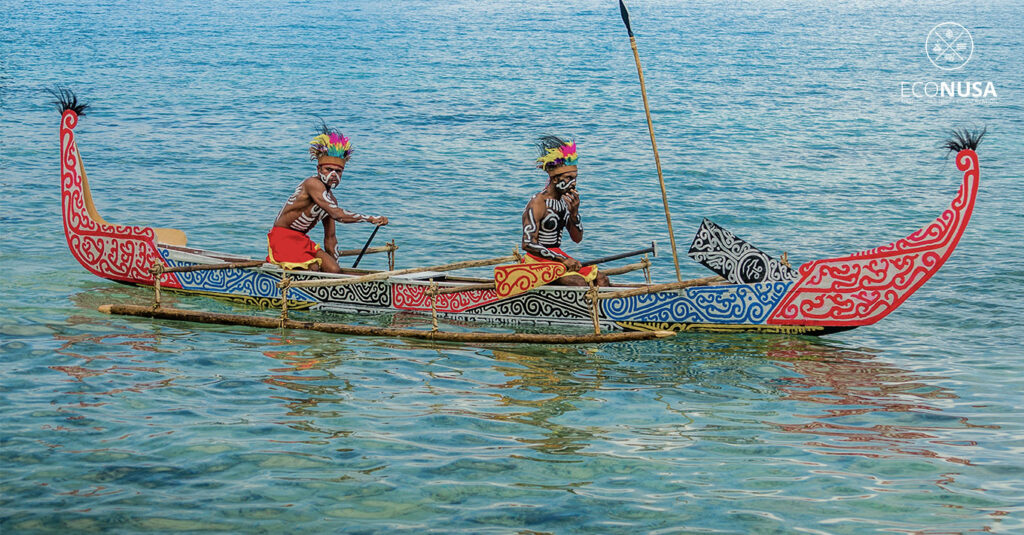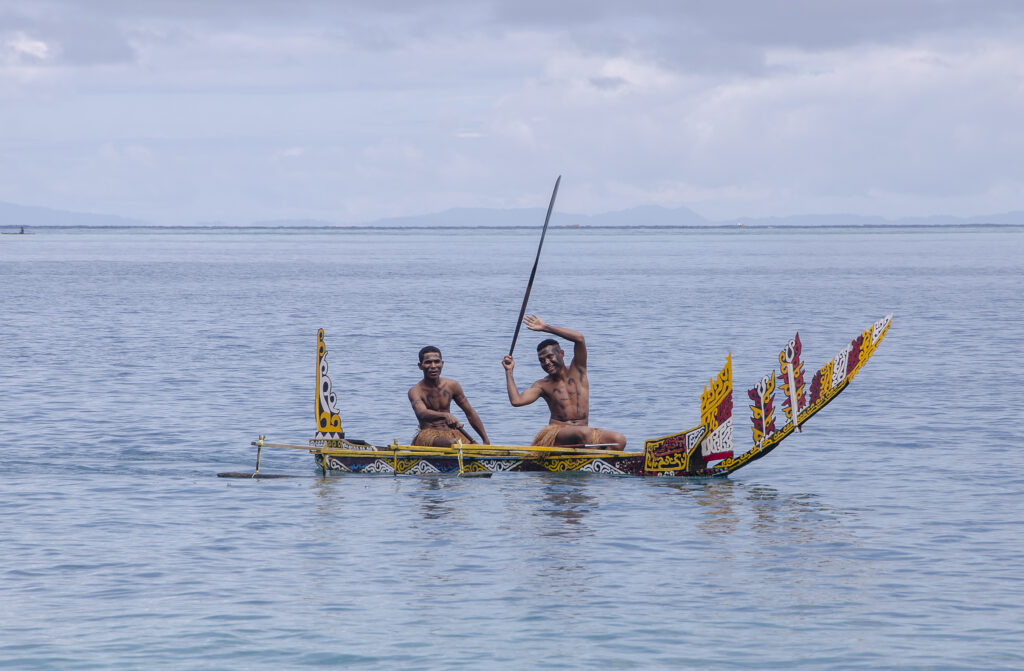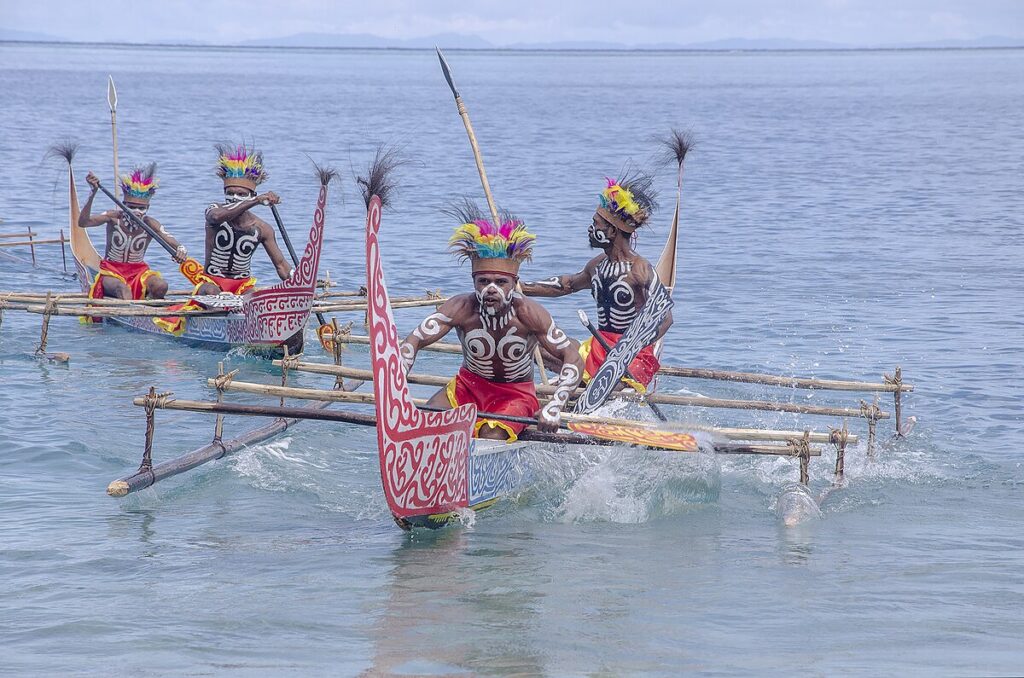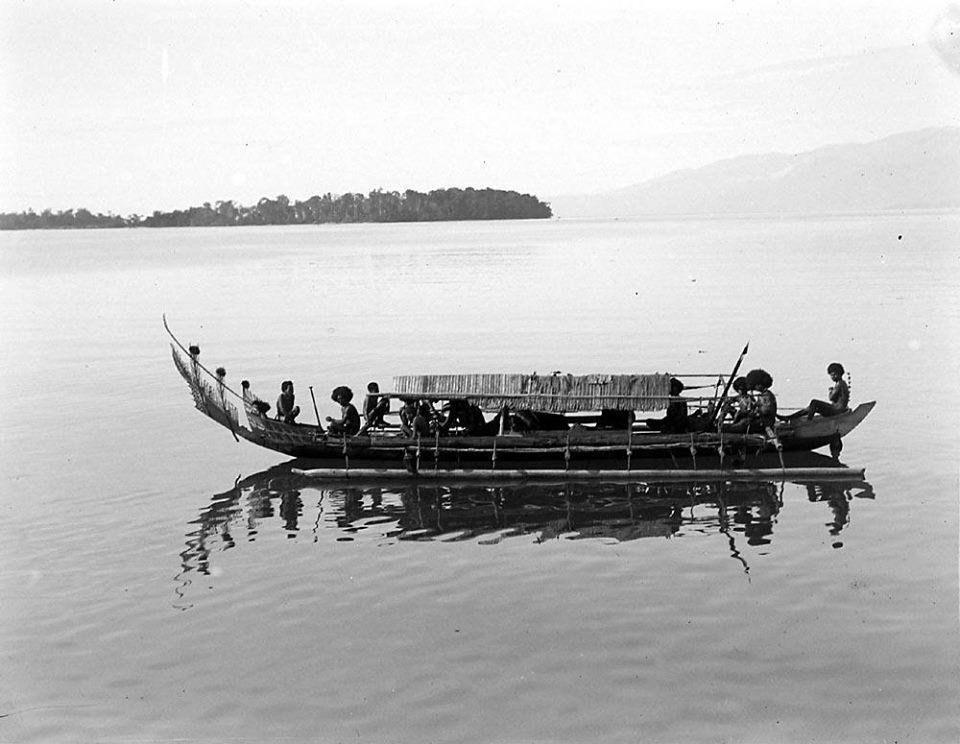Uncategorized
The Seafaring Legacy of the Biak People
As an archipelagic country, the sea serves as a connector between regions in Indonesia. The close relationship between the people and the sea has led many elements of local culture to be intertwined with maritime traditions. This connection also gave rise to seafaring ethnic groups skilled in shipbuilding. One such seafaring group, known as pirates from the east, is the Biak people from Papua. Their voyages resulted in their communities spreading across various regions in Papua, Maluku, and even Sulawesi.
The Biak people consist of nine sub-tribes, known as Sub We Vyak Iwa or “nine lands that rose from the sea.” These sub-tribes include Padaido/Anovo, Masen, Fairyo, Byak, Samber, Manwor, Mnuwar/Swandiwe, Wombonda, and Poiru. The Biak inhabit arid regions, which makes farming difficult and compels them to seek food sources in other areas. The voyages undertaken to find food sources in other regions are called Wadwai. Aside from food sources, inter-tribal warfare and ego korfandi—the pursuit of prestige—also motivated the Biak to sail. In these voyages, they not only traded but also raided passing ships around Cenderawasih Bay. They were known as feared pirates, not only by other local tribes but also by foreign traders in the archipelago. The Dutch referred to them as “Paoesche Zeerovers”, meaning “Papuan pirates.”

Oral sources suggest that Papuan seafaring began as early as the 12th century, reaching Maluku, Sulawesi, Java, and even the Malay Peninsula. Other sources even claim that the Biak people had been sailing since the 8th century. One of the oldest written sources referencing Papua’s contact with other regions is the Negarakertagama, written by Prapanca in 1365 AD. In Pieter Mijer’s records (1812–1881), it was noted that in June 1824, seventy Papuan pirate ships appeared in the waters of Banyuwangi and Madura. Biak pirates sailed to foreign lands in search of new goods. They were deeply feared and highly respected by other tribes.
The Biak used three types of boats for sailing: large boats (Wai Beba), medium boats (Wai Fadu/Wai Fanobek), and small boats (Wai Kasun). The most well-known was the Wairon, a war boat. The Wairon had a slim design for speed and could carry 20 to 30 people. Its prow resembled a dragon’s head and the stern a dragon’s tail, completed with a rum to carry a Korwar statue during voyages. In addition to warfare, the Wairon was also used for trade.
Another type of boat was the Wai Mansusu, a cargo vessel used for trading. Both ends of the Wai Mansusu were shaped identically, allowing rowers to reverse direction simply by turning their bodies, without having to turn the boat. A VOC report from 1680 noted that after capturing one of these Papuan pirate boats, it measured only 18–19 feet in length, 5 feet in width, and had a 3-foot hull height.

The materials used to build boats typically came from several types of trees. The body was made from Moref, Marem, Sandere, or Abiyai trees because of their hard and water-resistant wood. The carvings featured eagle or dragon motifs. For the Biak people, boats were sacred objects and had to be built by skilled artisans, with certain rituals. When sailing, the Biak relied on seasonal navigations using the constellations Orion (Sawakoi) and Scorpio (Romangguandi).
When trade was done via barter, the Biak used military strength to acquire the goods they sought. Their maritime and combat prowess made them allies of Sultan Nuku of the Tidore Sultanate in his war against Jailolo from Ternate. The Biak also helped Sultan Nuku resist the VOC. This alliance strengthened the bond between the Biak and the Tidore kingdom. The relationship was further tightened through the marriage of Gurabesi (a legendary Biak and Raja Ampat figure) to Boki Taiba, sister of the Sultan of Tidore. This connection is preserved in the legend of Sekfamneri.

Biak was also claimed as part of Tidore’s territory. Between the late 13th and early 14th centuries, the Sultan of Tidore appointed tribal leaders along Papua’s northern and western coasts. These tribal leaders were made local rulers and were required to pay annual tribute, including turtle shells, birds of paradise, and slaves. This pushed the Biak to raid other villages to obtain slaves. These slaves were then offered as tribute and work for transporting goods.
During these raids, women and possessions were often taken. Looted goods became an important currency in customary laws in the modern era. Women were the most valuable due to their reproductive role and high value for paying fines. The Biak also captured people from new territories to replace rowers who fell ill during voyages. Biak pirates were so feared that they were only surpassed by Tobelo pirates in the 19th century.
During the Dutch trading era, the Dutch used slaves for domestic or plantation work. They made agreements with Tidore to supply slaves. The Sultan of Tidore then ordered his subordinates to capture slaves from his territories, including Biak. This caused chaos in these regions. In turn, the Biak began to raid neighboring tribes and even kill outsiders to acquire slaves. As a result, in 1673, the Dutch issued a decree that any ship without a permit from the Dutch Governor in Maluku or the Sultan of Tidore would be fined two slaves, and for the murder of a Dutch company member, the fine was one slave.
When Biak slave-hunting voyages expanded, slaves became a trade commodity. The situation worsened with the rise of mambri-mambri (war leaders). Known for their cruelty, they viewed slave hunting as a way to gain prestige. Their daring piracy at sea posed a serious threat to Dutch colonial rule and trade. In 1704, the Dutch sent envoys to Misool to negotiate with pirate leaders from Raja Ampat and Biak. However, the pirate leaders still honored the authority of Tidore.

Although the slave-hunting era and the golden age of Biak piracy have passed, the tradition of seafaring remains part of Biak community life. Many still rely on fishing for their livelihoods. The region’s marine wealth continues to be utilized by locals. Unfortunately, few traces of their once-great naval history remain. Only a handful of boats are preserved in museums, and the scarcity of written records makes it difficult to trace the full story of Papua’s pirate adventurers.
Reference:
Kamma, F. (1948). ‘De verhouding tussen Tidore and de Papoesche Eilanden in legende en historie, II’ (The Relation between Tidore and the Papua Islands and history), Indonesië.
Koentjaraningrat. (1963). Penduduk Irian Barat. Djakarta: Universitas Indonesia.
Usmany, D. (2014). Pelayaran orang Biak Numfor sebelum abad 19 suatu tinjauan sejarah matirim. Jnana Budaya 19(2), 199-216.


